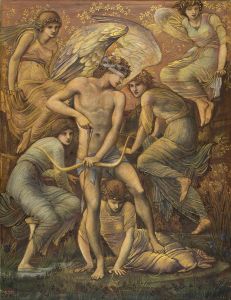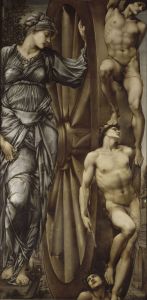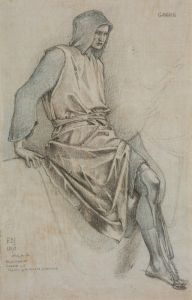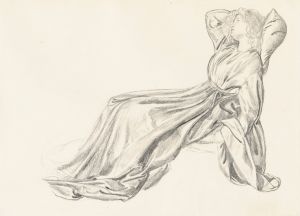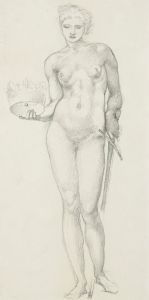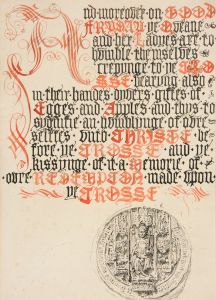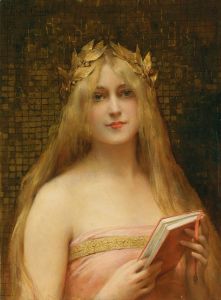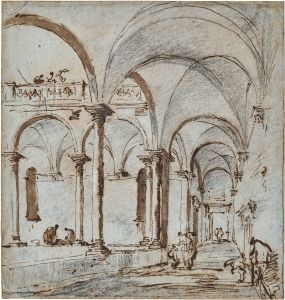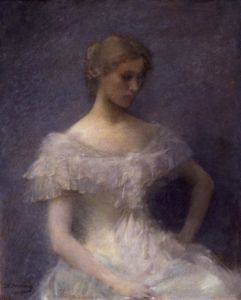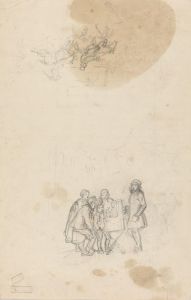
Two studies of a seated girl playing a sitar
A hand-painted replica of Sir Edward Coley Burne-Jones’s masterpiece Two studies of a seated girl playing a sitar, meticulously crafted by professional artists to capture the true essence of the original. Each piece is created with museum-quality canvas and rare mineral pigments, carefully painted by experienced artists with delicate brushstrokes and rich, layered colors to perfectly recreate the texture of the original artwork. Unlike machine-printed reproductions, this hand-painted version brings the painting to life, infused with the artist’s emotions and skill in every stroke. Whether for personal collection or home decoration, it instantly elevates the artistic atmosphere of any space.
Sir Edward Coley Burne-Jones was a prominent British artist and designer closely associated with the later phase of the Pre-Raphaelite movement. His works are celebrated for their romanticism and medieval-inspired themes, often depicting mythological and classical subjects with a distinctive dreamlike quality. Among his numerous works, "Two Studies of a Seated Girl Playing a Sitar" stands out as an intriguing example of his artistic exploration.
"Two Studies of a Seated Girl Playing a Sitar" is a drawing that showcases Burne-Jones's skill in capturing the delicate and ethereal beauty of his subjects. The artwork consists of two studies, or preparatory sketches, of a young girl seated with a sitar, a traditional Indian stringed instrument. These studies highlight Burne-Jones's interest in the exotic and the incorporation of diverse cultural elements into his art, a characteristic that was not uncommon during the Victorian era when there was a fascination with the "Orient" and its artistic traditions.
The drawing is executed with a fine attention to detail, characteristic of Burne-Jones's meticulous approach to his work. The girl's pose is serene and contemplative, reflecting the introspective quality often found in Burne-Jones's figures. The sitar, with its intricate design, is rendered with precision, emphasizing the artist's appreciation for the craftsmanship of musical instruments and their aesthetic value.
Burne-Jones's choice to depict a sitar player may have been influenced by the broader Victorian interest in Indian culture, which was partly a result of Britain's colonial presence in India. This period saw an increased exposure to and appreciation for Indian art, music, and literature among the British public. The sitar, as a symbol of Indian music, would have been an exotic and intriguing subject for Burne-Jones and his contemporaries.
The studies are likely preparatory works for a larger composition or a series of works that Burne-Jones intended to develop further. Such studies were a common practice for the artist, allowing him to experiment with poses, compositions, and details before committing to a final piece. These sketches provide insight into Burne-Jones's creative process and his dedication to achieving a harmonious balance between form and content.
While "Two Studies of a Seated Girl Playing a Sitar" may not be as widely recognized as some of Burne-Jones's larger and more elaborate paintings, it remains a testament to his ability to blend different cultural influences into his art. The drawing exemplifies his fascination with beauty, music, and the exploration of themes beyond the conventional boundaries of Western art.
Overall, this work reflects Burne-Jones's broader artistic vision, which sought to transcend the mundane and transport viewers into a world of imagination and beauty. His legacy as a key figure in the Pre-Raphaelite movement and his influence on subsequent generations of artists continue to be celebrated today.





